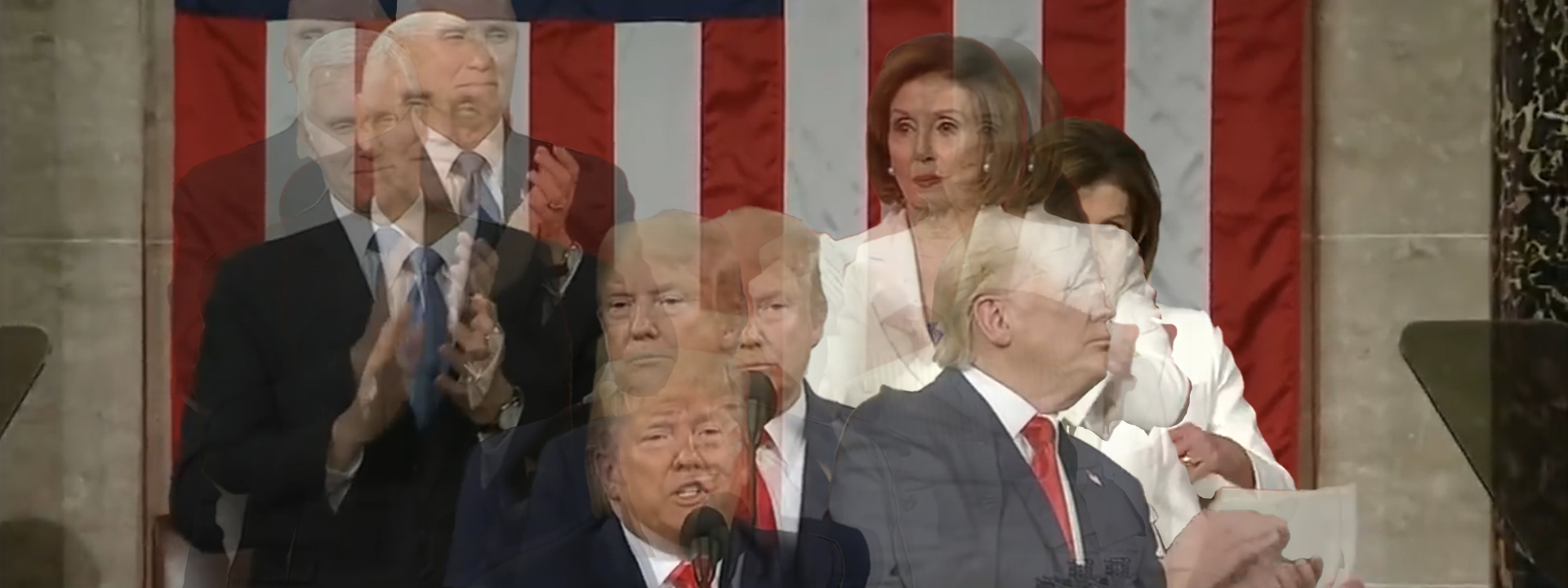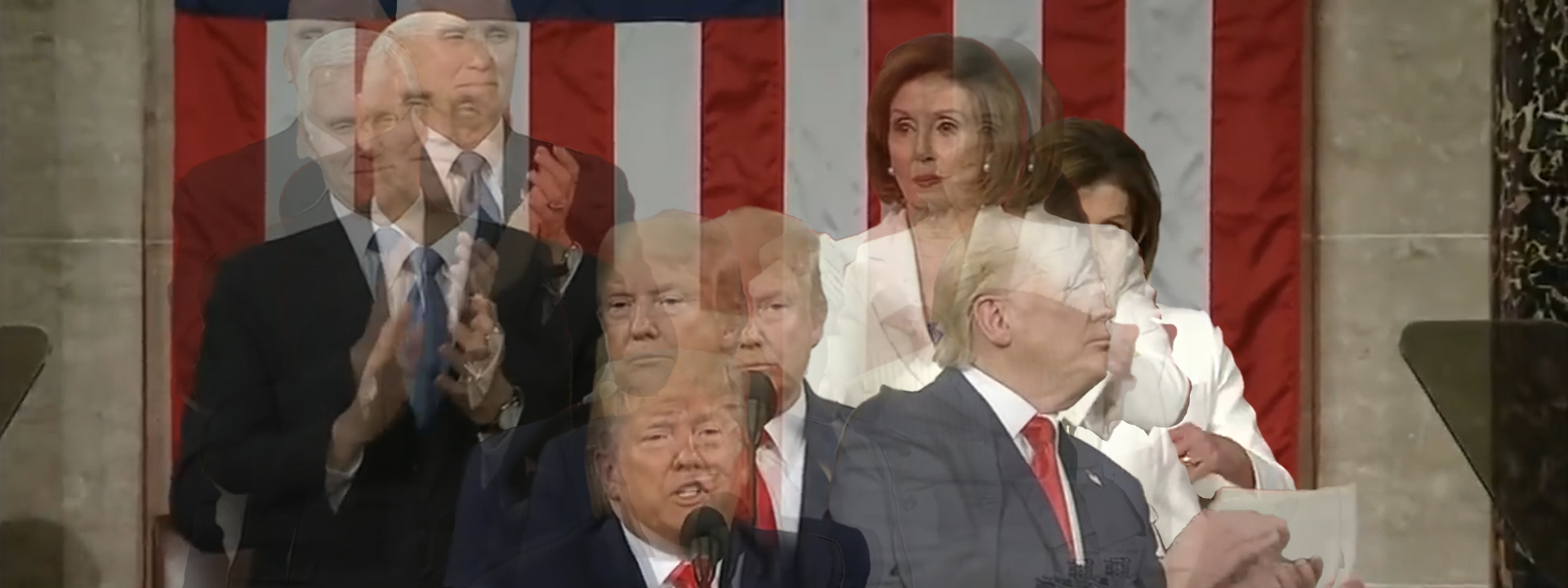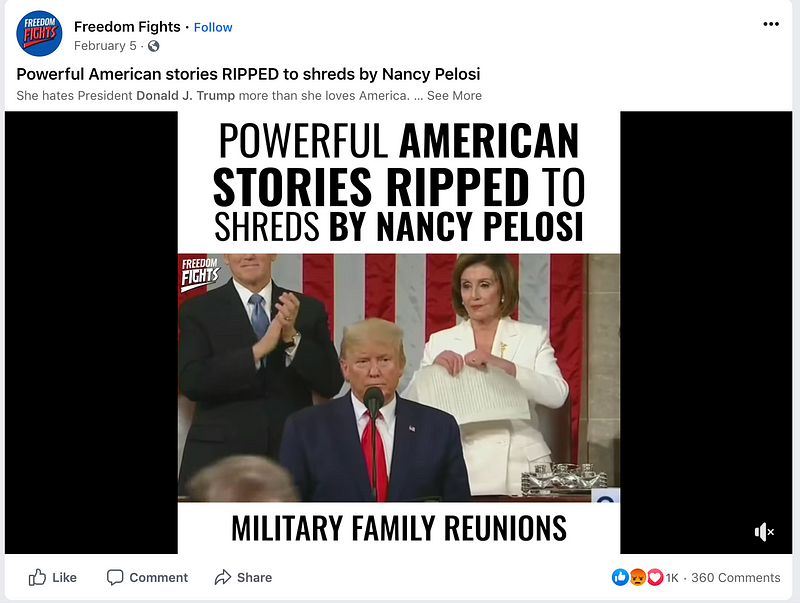Conservative group manipulates Pelosi footage to support Trump coronavirus policies
State of the Union speech edited
Conservative group manipulates Pelosi footage to support Trump coronavirus policies

State of the Union speech edited to make Nancy Pelosi appear dismissive of COVID-19 threat

On March 31, 2020, a tweet by Turning Point USA’s Alexander Lorusso featured a deceptively edited video cut from President Trump’s January 2020 State of the Union speech, in an attempt to support President Donald Trump’s COVID-19 response while undermining Speaker of the House Nancy Pelosi. While rudimentary editing techniques such as this may not attract as much buzz as deepfakes or other forms of synthetic media, it is one of the easiest and most effective ways to turn legitimate footage into disinformation that falsifies events and manipulates viewers’ understanding of them.
The short clip begins with Donald Trump discussing the new coronavirus outbreak during his address to Congress, and ends with a closeup of Speaker Pelosi tearing up a copy of the president’s speech. The two moments actually took place 36 minutes apart from each other in the chronology of the State of the Union, but appear adjoined with a jump cut and accompanying caption on Twitter.
Amid an already dizzying media environment and the worsening global pandemic, the clip’s manufactured context implies Speaker Pelosi’s action of tearing up the speech was a direct response to the president’s coronavirus remarks. The clip, branded with both Turning Point USA’s insignia and their subsidiary outlet Freedom Fights, appeared across multiple platforms, amassing considerable engagement on Facebook, Instagram, and Twitter.
The construction of the video alters the message of its component clips by way of splicing. Splicing, as defined in the Washington Post fact checker’s guide to manipulated video, characterizes manipulation of this sort as:
“Editing together disparate videos fundamentally alters the story that is being told.”
While it is true that the president made mention of the coronavirus in the speech (at 45:32) and it is also true that Speaker Pelosi tore up the speech in the final minutes of the broadcast (at 1:22:19), placing the two clips in tandem alters the context of her actions. To a less-critical observer, the altered video showing Pelosi’s dismissal of the address can be interpreted as a direct response to the president’s brief remarks — three sentences total — discussing the coronavirus.
The context with which the content was distributed also contributes to its misleading message. On Twitter, Alexander Lorusso and Charlie Kirk of Turning Point USA included text in the body of their tweets that characterized the Democrat’s decision to impeach the president as a distraction from the threat of the coronavirus.

On Facebook and Instagram, the videos were captioned with text that read: “This should tell you everything you need to know. When President Donald J. Trump addressed COVID-19 during his State of the Union, Speaker Pelosi ripped it up.” This sort of language emphasizes the exploited context manipulation and discourages viewers of the content from pursuing further information on the matter.

This video is not the first of its kind from Freedom Fights. A pinned post on the outlet’s Facebook page dated February 5, 2020 depicts the very same format — Nancy Pelosi tearing up the speech in response to a select excerpt — applied to other significant moments throughout the State of the Union.

This sort of video manipulation proves to be especially pernicious due in part to its capacity to go unnoticed and its technical simplicity. While some may interpret the edits as satire, others may perceive the video as authentic, or internalize its message without considering its intention to mislead.
Max Rizzuto is a Research Assistant at the DFRLab based in Washington, D.C.
Follow along for more in-depth analysis from our #DigitalSherlocks.

